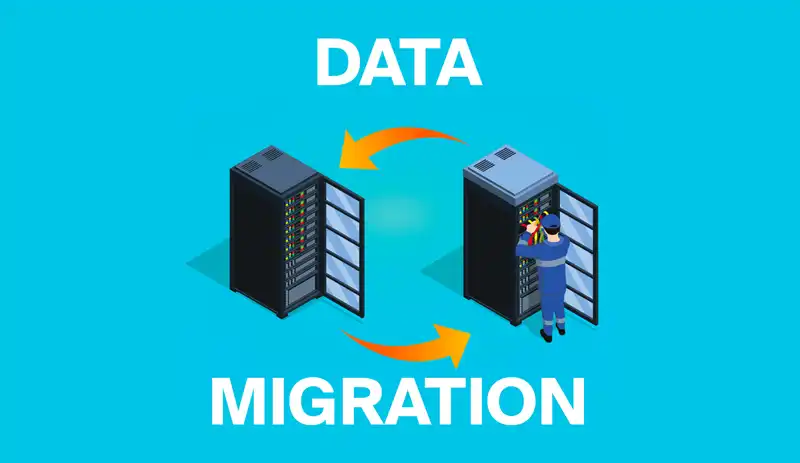You can also be interested in these:
- How to build a review website?
- 5 Benefits of animated explainer videos
- A comprehensive guide to understanding Facebook marketing metrics
- Tips for an effective e-commerce conversion rate optimization
You should carefully consider what data will transfer to the new system before purchasing a new server, cloud storage, computer, or software package. Portable systems offer a perfect chance to get rid of things that are no longer useful to your organization. In this article, we discuss several ways how to handle a data migration correctly, without losing any information needed.

What is data migration?
The process of transferring information from one database to another is known as data migration. This might refer to a database, an application, or a place to store data. A data transfer occurs once you:
- Replace a current program
- Purchase new hardware
- Acquire the cloud database
- Fill in a new database or data storage.
The ETL process
Extracting, transforming, and loading are referred to as ETL. The data is initially taken from the old system as part of the ETL process, after which it is changed to match the new application’s or database’s format. Finally, it should be loaded into the new system.
It makes no difference whether the data is stored locally or on the cloud. Data migration might be as easy as exporting and importing, or it can be far more complicated. The data must be adjusted before it can be imported into the new system if the records in systems A and B contain different fields or a different schema.
Types of data migrations and their challenges
The process of migrating data takes place at three different levels: storage, database, and applications.
Storage migration
The moment when you update your software is the exact time you may free up storage space and find the information you’re looking for. To make this procedure faster and easier, we employ a range of storage transfer solutions. We can’t, however, advise you on what should be kept and what should be thrown away. That is up to you to decide.
Database migration
Any time you switch database providers, update the database software, or transfer a database to the cloud, is considered to be a database migration. IT specialists search for compatibility problems during this process. Is there enough space available? Will performance suffer as a result? How to keep all the documents saved? Are there any existing or potential weak spots? How to secure them? Thus, before moving to the process itself, database migration is frequently carried out in a testing mode.
Application migration
The most challenging kind of data migration is connected to application migration. Since every application has a unique code, it may be necessary to manually modify the data before bringing it into the new application.
You should consider the effects of retaining or erasing old records and historical data. For instance, in an accounting system, you can import each transaction or start with an account opening balance. You could wish to delete someone from a CRM system with whom you haven’t spoken in a year. We assist clients in determining the ideal application migration plan for their circumstances.
Conclusion
Data migration may enhance an organization’s performance and competitiveness. Businesses choose migration for a variety of reasons, including to better manage traffic surges, enhance inefficient operations, satisfy data storage needs, encourage disaster recovery, and cut expenses associated with server administration and maintenance.
More stories like this
- How to build a review website?
- 5 Benefits of animated explainer videos
- A comprehensive guide to understanding Facebook marketing metrics
- Tips for an effective e-commerce conversion rate optimization
- Do we need Hyperconverged Infrastructure vendors for our business?
- How to get Internet Explorer for Windows 11